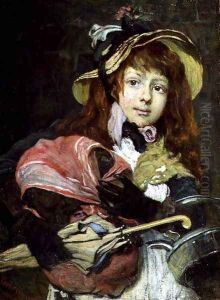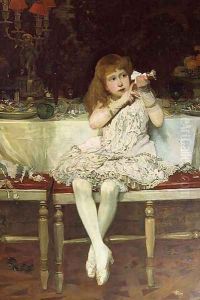Weedon Grossmith Paintings
Weedon Grossmith was an English writer, painter, actor, and illustrator, born on May 9, 1854, in London, England. He was the younger brother of George Grossmith, with whom he co-authored the famous comic novel 'The Diary of a Nobody.' Weedon's multifaceted career spanned various creative disciplines, reflecting his versatile artistic talents. He was not only instrumental in the literary world but also made significant contributions to the Victorian and Edwardian theatre and visual arts.
Initially, Weedon Grossmith trained as a painter and studied at the West London School of Art and the Royal Academy Schools. Despite his beginnings in visual arts, he eventually found his way into acting and became well-known on the London stage. His transition from painting to acting did not detract from his success; instead, it enriched his artistic expression and allowed him to explore various facets of creativity.
His collaboration with his brother George on 'The Diary of a Nobody' remains his most enduring legacy. First published in serial form in 'Punch' magazine in 1888-89 and then as a book in 1892, the novel chronicles the life and misadventures of Charles Pooter, a London clerk with social aspirations beyond his modest standing. The book's humor, derived from Pooter's obliviousness to his own pomposity and the mundane troubles he faces, made it a beloved classic of English literature. Weedon's illustrations for the book perfectly complemented its comedic tone, contributing significantly to its charm and appeal.
Beyond 'The Diary of a Nobody,' Weedon Grossmith wrote and illustrated other works, though none achieved the same level of fame. He continued his acting career, appearing in numerous plays and maintaining a presence in the London theatre scene until his death on July 14, 1919. Despite the broad scope of his talents, today he is primarily remembered for 'The Diary of a Nobody' and his contributions to late 19th and early 20th-century English literature and theatre. Weedon Grossmith's legacy, though closely tied to that of his brother, stands on its own merits, showcasing the breadth of his artistic abilities and his impact on the cultural landscape of his time.

